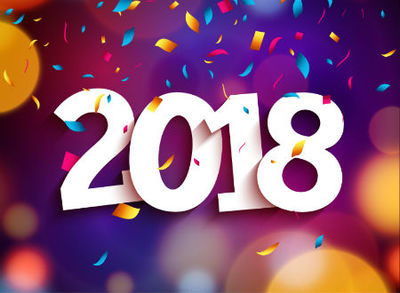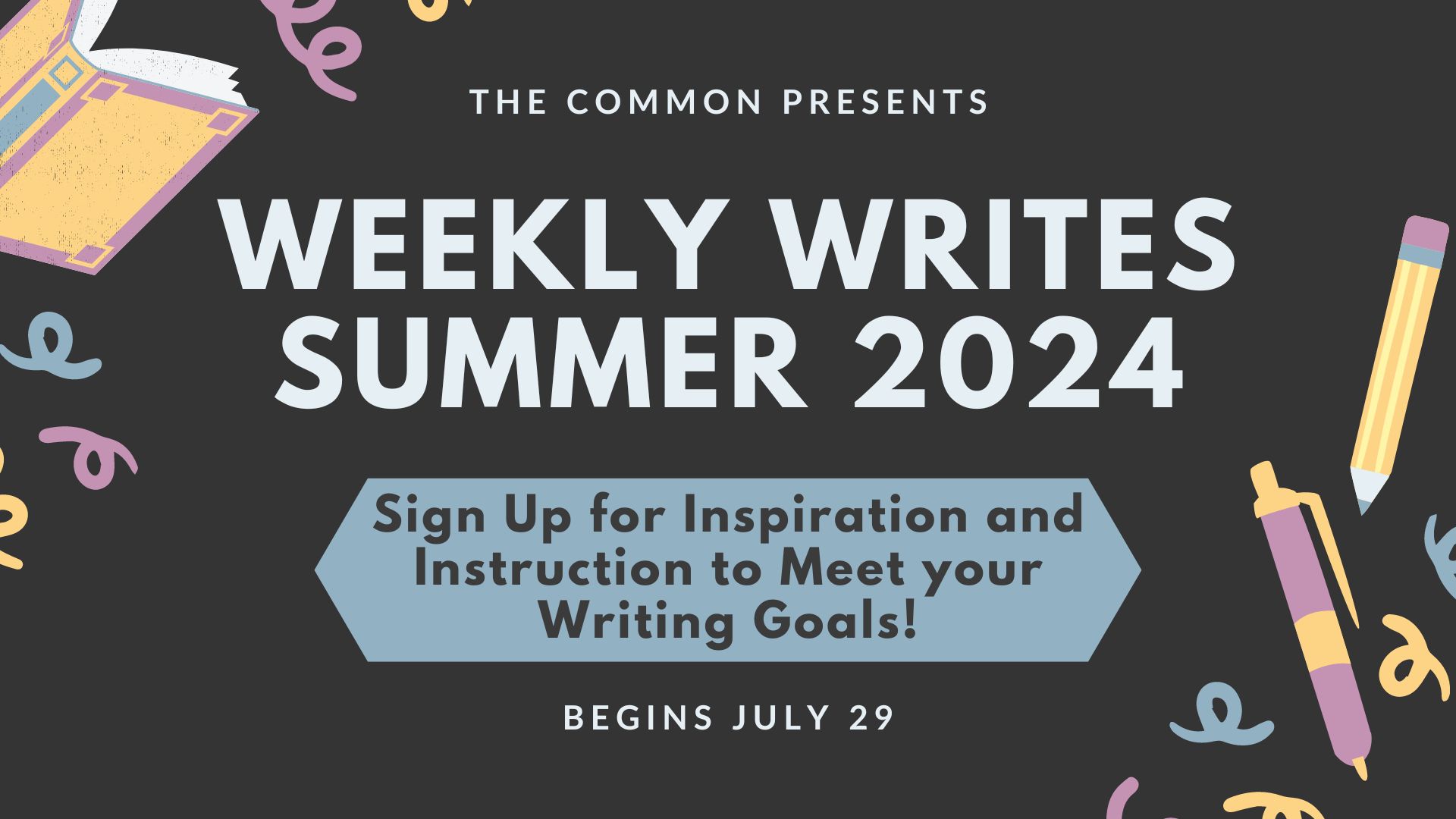As The Common office continues to anticipate the exciting work we plan to share in 2019 both online and in our next issues, it seems like a great time to reflect on the pieces that made 2018 just as exciting for us. See what resonated with readers the most in 2018 by browsing the list below of our most-read works of the past year: they range from fiction to essays, interviews, and more!
1. Plot vs. Story by Susan Scarf Merrell
 “In my own work, I find that early drafts are almost always unwieldy versions of Plot. The shaping into Story comes over multiple versions. The more I know of Plot—who is who, and where they come from, and why they believe what they believe—the more I gain the courage to shrink its presence, to move events offstage or eliminate scenes, to restructure the passage of time.”
“In my own work, I find that early drafts are almost always unwieldy versions of Plot. The shaping into Story comes over multiple versions. The more I know of Plot—who is who, and where they come from, and why they believe what they believe—the more I gain the courage to shrink its presence, to move events offstage or eliminate scenes, to restructure the passage of time.”
2. Arabs on the Beach in Alexandria by Noor Naga
“It was the first time I heard about the Arabs, but as often happens when  learning a new thing, that new thing begins to appear, to curl its skeletal fingers around one’s shoulder every few days until one feels haunted and also clairvoyant. Later that same summer, on our way to a wedding in King Mariout, we received warning phone calls from friends at the head of our motorcade: ‘Arabs on the road.’ This whisper passed from one car to another, like a virus moving down the knobs of a spine until the bone-chill was in everyone’s tail.”
learning a new thing, that new thing begins to appear, to curl its skeletal fingers around one’s shoulder every few days until one feels haunted and also clairvoyant. Later that same summer, on our way to a wedding in King Mariout, we received warning phone calls from friends at the head of our motorcade: ‘Arabs on the road.’ This whisper passed from one car to another, like a virus moving down the knobs of a spine until the bone-chill was in everyone’s tail.”
3. The History of Sound by Ben Shattuck
 “I wanted all the chiseled ridges of sound that went missing. The vibrations that had been released into the world and never concentrated down the phonograph’s tube and to the stylus, that had never been impressed to wax. I wanted a record of the sound from the years before… The history of sound, lost daily. I’ve started to think of Earth as a wax cylinder, the sun the needle, laid on Earth and drawing out the day’s music—the sound of people arguing, cooking, laughing, singing, moaning, crying, flirting. And behind that, a silent sweep of millions of sleeping people, washing across the Earth like static.” < read on >
“I wanted all the chiseled ridges of sound that went missing. The vibrations that had been released into the world and never concentrated down the phonograph’s tube and to the stylus, that had never been impressed to wax. I wanted a record of the sound from the years before… The history of sound, lost daily. I’ve started to think of Earth as a wax cylinder, the sun the needle, laid on Earth and drawing out the day’s music—the sound of people arguing, cooking, laughing, singing, moaning, crying, flirting. And behind that, a silent sweep of millions of sleeping people, washing across the Earth like static.” < read on >
4. Tonight, the Wind by Hugo Ríos Cordero
“The green was gone from the landscape, and now a frail gray dominated, eclipsing the frontier between earth and sky. The sea was brown, full of the rivers’ burnt umber tears. Signposts, windows, roofs were scattered on the ground. The river moved to their front door. They saw the elderly being lifted by soldiers into their trucks and taken to secure locations while they steadfastly held their dogs. People walked slowly among the ruins as if covered by a thick invisible mist, shouldering the weight of an overcast sky that kept promising more rain. Everything was covered by water, and yet there was not a drop to drink.” < read on >
5. The Thing That Would Unmake You: an Interview with Carmen Maria Machado by Hilary Leichter
“I always think of genre as a means of worldbuilding. And ‘literary’ is a  stylistic designation of language, of psychology. It’s a style, as opposed to, say, a commercial style, which is breezier, and more plot-focused. It just has different priorities. Things like science fiction, fantasy, and horror are being determined by worldbuilding and tropes, or readerly expectations. …I consider myself a little scavenger. I go around and take elements from different genres that can serve my needs. I build it all together in a little trash-nest, and that’s my story! Which is fine; that’s my favorite kind of fiction.”
stylistic designation of language, of psychology. It’s a style, as opposed to, say, a commercial style, which is breezier, and more plot-focused. It just has different priorities. Things like science fiction, fantasy, and horror are being determined by worldbuilding and tropes, or readerly expectations. …I consider myself a little scavenger. I go around and take elements from different genres that can serve my needs. I build it all together in a little trash-nest, and that’s my story! Which is fine; that’s my favorite kind of fiction.”
6. Four Skies by Joanna Klink
 “If you have grieved you have loved. Twinned,
“If you have grieved you have loved. Twinned,
like the sun’s thread-corona, the moon’s deepening
pearl. These violent deaths of stars an expanse
through which everything moves—lights thrown
from collapse. You are coastal, throatless,
roaming through people who hold tight then let go.”
7. At the Edge of the World by Jeannie Marshall
“That people experience such a physical and negative response to something we so often describe as lovely suggests that art affects us at a level beyond the conscious. Celestial sensations and art speaking directly to the soul sound like desirable sensations, but Stendhal wished he could forget what it felt like. Art is provocative and what it provokes isn’t necessarily comfortable.
In fact, it can be violent.” < read on >
8. The Shed by Liz Arnold
“At the funeral home, you could check a box on the form to receive photographs of the formal ceremony. I insisted that we buy the package with the photos. He’d vanished from my life. I had to see. My mother had agreed, though she paused, and mentioned it cost more… I don’t know which box got checked, but we never got any photographs. The Navy forwarded a touching letter with coordinates of the ship at the time of burial, details that my father would’ve appreciated. They also sent a U.S. flag folded wizardly into a military triangle that none of us have dared open, for fear of refolding. She had no recollection of the conversation when I exclaimed that the photos were missing. I kept telling myself to let it go.” < read on >
9. March 2018 Poetry Feature: Works by Jill McDonough, Oksana Maksymchuk, John Allen Taylor
“I’m sitting in bed where a woman has chosen to sleep
beside me, whom I’ve told I’m slow to kindle
within me what I would not have burn
so close to what you left.
Do you see her temple
rest against my leg? Listen, how cavernous
her breath, how vast we are,
how little room for anything else.
Watch how she touches me, the nail of her little finger
brushing my thigh.
How she absolves me of your sin.” < read on >
10. Fascinations by Philip Brunst
“She doesn’t mention my father much anymore. I think she’s said all that  she needed to about him. On the rare occasion she drifts into something negative, it’s like she’s slipped past some sort of barrier of how she’s told herself she feels. She roams around in her memory for a while, blind to her surroundings, and when she catches herself, she looks about the room with a startled expression on her face and throws in something good about him that completely contradicts what she first said. Then she laughs, a quick sort of flummoxed laugh, where it’s clear she’s not concerned if anyone else understands.” < read on >
she needed to about him. On the rare occasion she drifts into something negative, it’s like she’s slipped past some sort of barrier of how she’s told herself she feels. She roams around in her memory for a while, blind to her surroundings, and when she catches herself, she looks about the room with a startled expression on her face and throws in something good about him that completely contradicts what she first said. Then she laughs, a quick sort of flummoxed laugh, where it’s clear she’s not concerned if anyone else understands.” < read on >
Want more? You can browse all our 2018 pieces – art, fiction, essays, poetry, interviews, reviews, and so much more – from this list.




